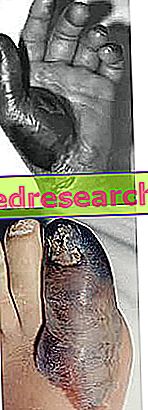
Color apart, ketchup and blood have the characteristic of being both non-Newtonian fluids . These fluids, in fact, show a certain resistance to flow when they are hardly stressed, whereas when there is a strong intensity they flow rather easily. In other words, their viscosity is not constant, but varies according to the types and intensities of the forces to which they are subjected.
The blood, for example, decreases its viscosity when it flows into the capillaries, thanks to the deformability of the red blood cells. These cells, responsible for much of the haematic viscosity, can deform naturally, putting themselves in a single file and stretching when they penetrate the capillaries. In these conditions the blood is less viscous (it flows better), while it gradually tends to increase its viscosity as a function of the diameter of the vessel (up to values of about 300 µm in diameter).
As far as ketchup is concerned, it is a common experience to encounter a certain difficulty in getting it out of the tube, only to complain about its disruptive release once a certain pressure threshold is exceeded. The characteristic of non-Newtonian fluids is precisely this, namely that of being closer to solids up to certain values of applied stress, to then assume characteristics more similar to those of liquids beyond a certain threshold. So, to get the ketchup out, you need to make a decision: either the pressure is concentrated by setting a strong decisive force, or it is shaken with less intensity but longer.



